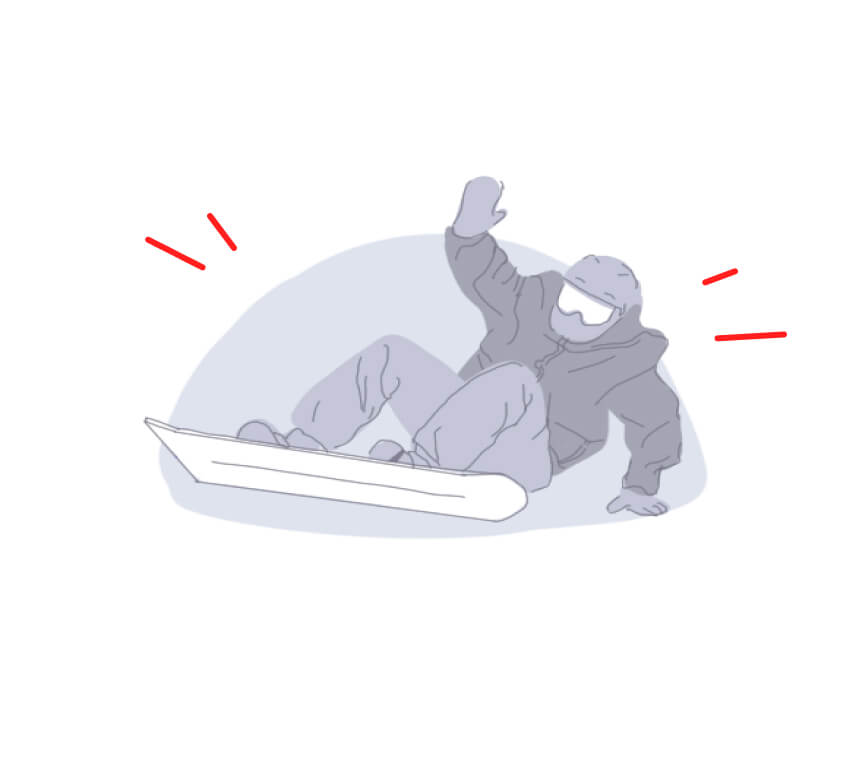2. Snowboard stance
The problem

In snowboarding, everything is more complicated on the one hand and simpler on the other. Most people, when they start snowboarding, can't even ride down the slope because they don’t really understand how to do that. It’s quite a weird feeling when your feet are bound to the board and you can’t rely on either foot if you fall down. It’s as if your shoelaces are tied to each other while you’re trying to move.
So most snowboarders get used to a somewhat position as they try to find their way around with these boards fastened to their feet.Their feet are perpendicular to the board (while they shouldn’t be), and their body tends to look sideways while in fact, it should look forward, along the slope.
How to fix it

Getting this position right does two things. First, it enhances safety as it either protects you from falling or at least makes any fall less serious.Second, with the right carving position of torso and feet, a skier can better control speed and choose to run faster or slower.That’s why the SkyTechSport simulator is a magic stick for beginners. It helps you understand exactly what you need to do and get your technique right while minimizing the risk of injury.
SkyTechSport helps you to practice this technique within a controlled environment which is a lot harder to get going down the slope.


























